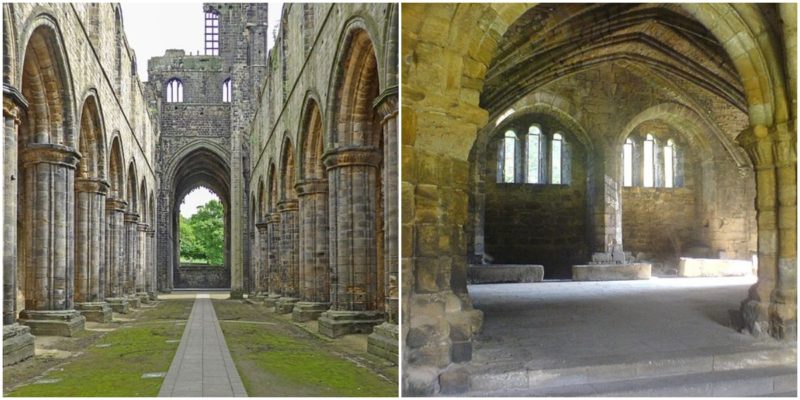Derelict Kirkstall Abbey is a site of significant historic and architectural value and is well worth a visit. It is placed on the north bank of the River Aire in the suburb of Kirkstall, north-west of Leeds city center in West Yorkshire, England.
It sits at the heart of a tranquil public park and is surrounded by old trees and lush greenery. Great parts of the abbey’s structures have resisted the passage of time and still stand proudly.
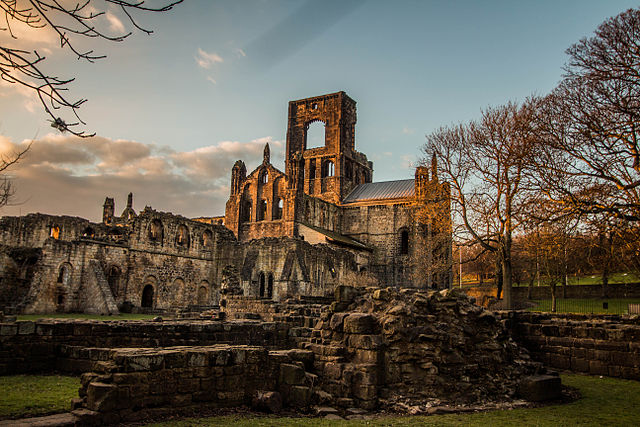
Throughout the years, the scenic ruins of Kirkstall Abbey have been a frequent subject of the work of famous painters such as J.M.W. Turner, Thomas Girtin, and John Sell Cotman.
The abbey still inspires as it did in the past. It attracts thousands of visitors a year, who come to relax among the tranquil surroundings, to enjoy and to explore the dramatic architecture, and to learn about the everyday life and duties of the monks who once lived at the complex.
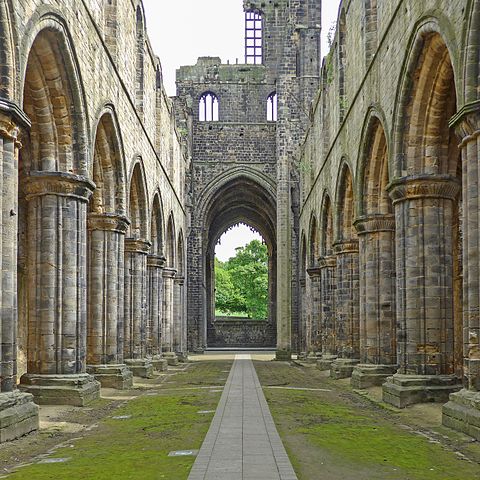
Facts and information, primarily about the life of the monks, can be learned in the interactive visitor center. The center also hosts a catalogue of images of the abbey from the 18th century to the present day. Throughout the year, especially from early spring until late fall, the site offers many activities and events for every generation. The Abbey House Museum is located just across the road from the ruins, on the site of the former gatehouse.
The area around the museum has Victorian streets with authentic shops, and this adds more flavor to the timeless atmosphere.
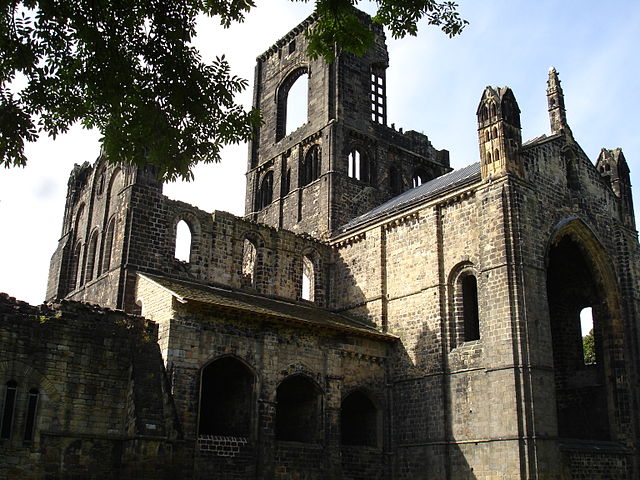
The foundations were set in 1147 when 12 monks from Fountains Abbey, under the guidance of their abbot, Alexander, settled on a site at Barnoldswick, located approximately 34 miles from where the ruins now stand. In 1152, the community relocated to the current site of Kirkstall and remained there until the dissolution of the abbey in 1539.
Luckily, most of its structures escaped the destruction and plundering that happened to most abbeys in England during this period.
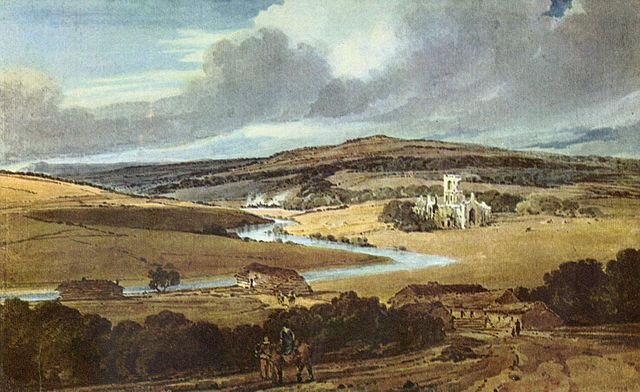
Some of the buildings that were left standing were used for agricultural purposes. Probably because of this, Kirkstall is now one of the most complete examples of a Cistercian abbey in Britain.
Today, its remains are situated in the industrial part of Leeds and the site is bisected by the A65 Kirkstall Road, but during the Middle Ages and up until the late 18th century, this was an isolated location set in a rural atmosphere. In the late 18th and early 19th centuries, the main road to Leeds actually ran through the nave of the church.
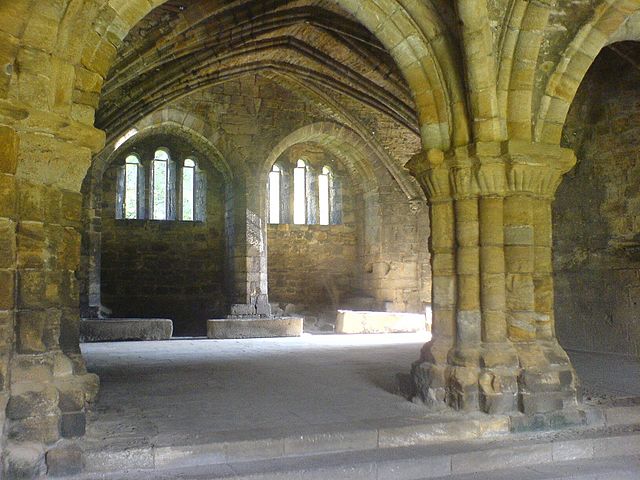
Kirkstall was established by Henry de Lacy, Baron of Pontefract, who was one of the most powerful landholders in the north of England. The abbey’s coat of arms, however, is based on that of the Peitivin family, who granted the monks the site at Kirkstall.
Like most other Cistercian abbeys in England, the 12th century was a time of prosperity and expansion for Kirkstall. During this period, the community developed the abbey precinct, and more lands and possessions were acquired too.
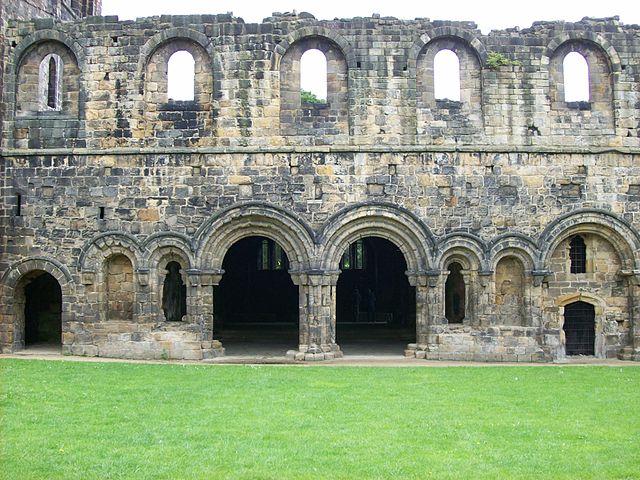
Derelict
From the 13th century, the financial support of the patrons decreased and a turbulent period ensued. The monks of Kirkstall, like the monks of other Cistercian abbeys, were involved in legal wrangling over their properties and rights.
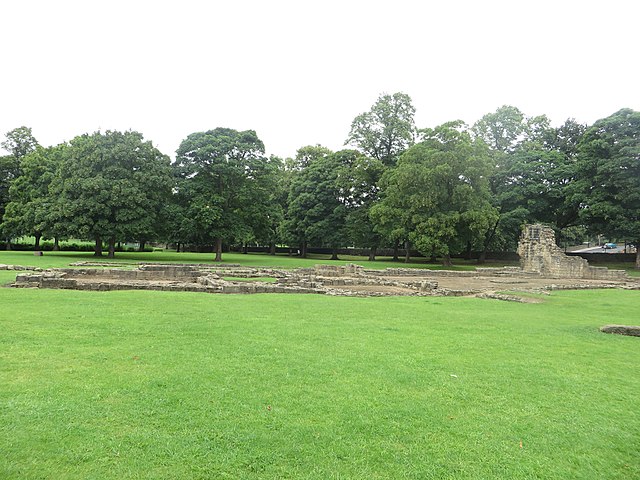
Moreover, some of them were caught up in business relating to the state and the Cistercian Order. Abbeys were also largely affected by the socio-economic problems that hit the region such as the Black Death, wars, and high taxes. Through the difficulties, the monks had a significant role in the development of trade and medieval industries.
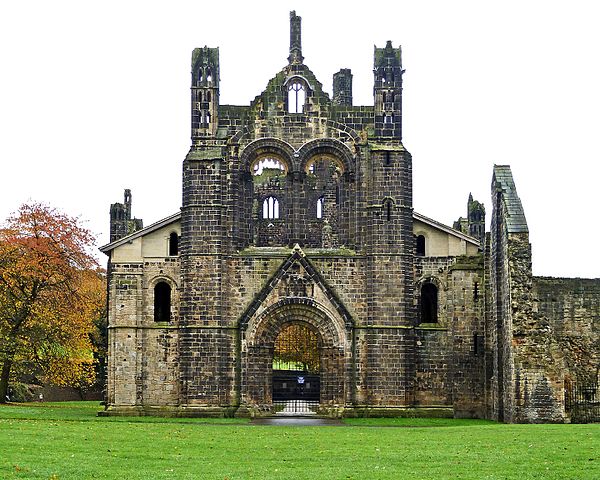
Extensive archaeological work has been done at the site, and today much is known about the buildings and the life of the community during medieval times.
Another Article From Us: Rose Island: The abandoned amusement park in Indiana
This knowledge was gained through a great number of surviving documents, such as charters and a chronicle of the house, as well as through a wonderful collection of artifacts such as pottery, seals, and metalwork.
